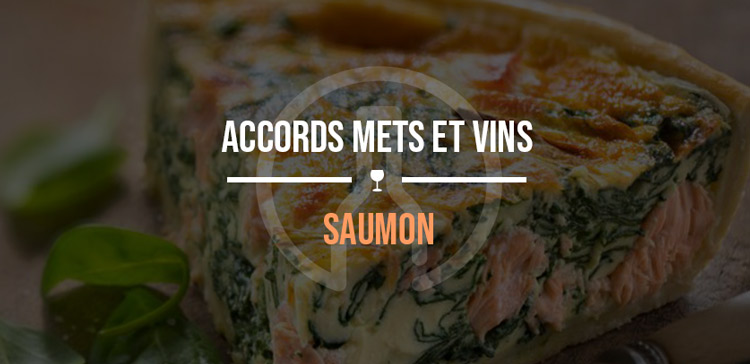Formerly known as tarte, fouace or eschaudez, the word quiche was first coined in 1605 in Nancy. Originally, quiche dough was a simple leavened dough, like bread dough, and it was not until much later that it was replaced by puff pastry or shortcrust pastry. The "real" quiche Lorraine recipe is made with local ingredients: eggs, bacon and cream. And yes, the real recipe contains no cheese, but gourmands that we are, we can't do without it!
We're going to offer you 2 different quiches with easy-to-make combinations.
-
With a Quiche Lorraine
An original quiche recipe, Quiche Lorraine is composed mainly of eggs, cream and bacon, with a hint of nutmeg. On the palate, the texture is fairly light, with hints of mild spices.
It should therefore be accompanied by a wine that is fairly fruity, but supple and round on the palate.
We're staying in the region with a white wine from Alsace. This time, we've chosen a Pinot Blanc from Domaine Weinbach, one of the region's legendary estates.
Pinot Blanc is an all-purpose grape variety. It is n'y too dry, n'y too fruity. It goes well with cold starters, shellfish and, in this case, our tart.
The pleasant nose releases aromas of white flowers and citrus fruit. On the palate, after a frank attack that contrasts with the roundness of the quiche, the fruit and spices take over, ensuring a balanced, gourmet match.
Obviously, we could have chosen a red from Alsace. A Pinot Noir to be precise, but to show that our friends from Lorraine aren't chauvinists, we selected a wine from Burgundy.
Daniel Rion's Côte de Nuit is a gem of a Pinot Noir. Supple, crisp, but with a little tension on the finish, this wine will go wonderfully well with our quiche. Its wild berry notes and slightly licorice finish will complement the smokiness of the bacon.
-
With Salmon Quiche
We're not going to go into detail about the composition of the Salmon Quiche, as we all have our own recipe that Grandmother used to make for us. Just make sure you have enough fish in the tart to get that smoky taste right on the palate.
White wines are the natural choice for this type of quiche. Whites that are rich enough, with a mineral, "flinty" structure to recall the smoky notes.
If, however, you're a red wine enthusiast, it's essential to avoid wines that are too powerful, and try a southern wine with more sunshine and flavour.
Un peu de folie.... Even if this wine is a match for so many fine gourmet dishes, there's nothing like a simple, local dish to accompany it. This 100% Sauvignon is declassified as a Vin de France, but its Pouilly-Fumé parcels will surprise you with their aromatic complexity. As mentioned above, the Sauvignon grape's citrus and lemon notes mingle with a smoky palette brought out by the wine's minerality. Ample on the palate, the finish is powerful and straightforward. A real bomb!
To shake things up a bit, we're now going for a Pouilly-Fuissé.
So no, it's not a wine from the same region as Pouilly-Fumé, nor is it the same grape variety, as this one is made from Chardonnay, Burgundy's white grape variety.
Burgundy! Again! Yes, but we have no choice if we want to find those smoky nuances in the wine. Yes, Chardonnay is one of the lucky ones, but not just any Chardonnay. Let's just say you need a fine terroir, and above all a Chardonnay that benefits from very ripe harvests, in sunny vintages. And here comes our Pouilly.
Found in the Mâcon region, Pouilly produces a very rich-tasting white wine, with a slightly oily texture and, in this vintage, a subtle woody, smoky finish...
A superb wine to discover!





![✨ Comptoir des Millésimes honors Champagne's great winemakers ✨[LINK TO THE ORGANIC CELLAR]We've selected 11 exceptional estates that reveal the full richness of Champagne terroir through unique, refined cuvées. Hugues Godmé - In Verzenay, this family-run biodynamic estate offers precise, vibrant champagnes with a beautiful mineral tension.Egly-Ouriet - A benchmark for the Montagne de Reims, its powerful champagnes, aged for long periods in barrel, impress with their complexity.Moussé Fils - In Cuisles, the Meunier grape is king. Pertois-Moriset - Pure, taut Chardonnay Grands Crus for lovers of chalky finesse. A fine address in Mesnil-sur-Oger.Geoffroy - In Aÿ, this domaine produces fine champagnes, carefully crafted and barrel-aged to reveal the full complexity of the terroir.Larmandier-Bernier - Biodynamic viticulture, exceptional parcels and purity. Crystal-clear, intense champagnes for connoisseurs.Roger Coulon - Eight generations of expertise at Vrigny. Balanced, subtle and elegant champagnes.A. Bergère - In Avize, a dynamic house offering expressive, fruity and accessible cuvées.Adrien Renoir - A promising talent from Verzy, he produces fine, complex champagnes with a true sense of terroir.De Sousa - Emblematic house in Avize. Richness, depth, long ageing: Chardonnay at its peak.Pierre Paillard - In Bouzy, the family magnifies Pinot Noir with vinous, racy and sincere cuvées.📦 Order now on our website#ComptoirdesMillésimes #Champagne #VigneronsIndépendants #GrandVin #ChampagnesdeTerroir #LivraisonRapide](https://www.comptoirdesmillesimes.com/blog/wp-content/plugins/instagram-feed/img/placeholder.png)